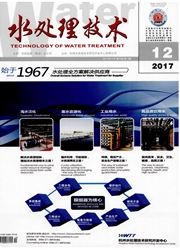

 中文摘要:
中文摘要:
实验室配制含微生物水样,考察超声波频率、声能密度、超声时间和工作方式对微生物灭活效能的影响。结果表明,声能密度对超声灭活微生物的影响取决于超声对微生物的作用机制,随声能密度的增加,对细菌总数、总大肠菌群和粪大肠菌群灭活率均呈现先增加后减小再增加的变化趋势;40kHz频率超声对微生物灭活效果好于25kHz;随着超声时间的延长,细菌总数、总大肠菌群和粪大肠菌群灭活率随之增加。相比连续超声作用,一定条件的脉冲超声工作方式具有更好的灭活效果。选择适当的超声频率、声能密度、作用时间和工作方式更有利于超声灭活致病微生物,且能避免了能量的浪费。
 英文摘要:
英文摘要:
The effect of ultrasonic treatment conditions, i.e., ultrasonic frequency, energy density, sonication time and working mode on microbial inactivation rate are investigated using simulated water in lab contains microbes as objectives. The results indicated that the impact of ultrasonic energy density on microbial inactivation depended on the ultrasonic mechanism. The inactivation rate of total bacteria, total coliform and fecal coliform initially increased,then decreased and was resurgent with increased energy density. Ultrasound frequency at 40 kHz exhibited superiority to 25 kHz. Furthermore, the inactivation rate of the three observed microbial index improved with the increase of sonication time. Additionally, as compared to continuous ultrasonic mode, the pulsed one was better under certain conditions. Selecting appropriate ultrasonic frequency, energy density, reaction time and work mode, therefore, were beneficial to pathogenic microorganisms' inactivation and avoid the energy waste.
 同期刊论文项目
同期刊论文项目
 同项目期刊论文
同项目期刊论文
 期刊信息
期刊信息
